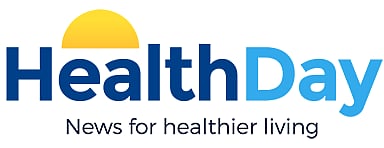The American Heart Association's International Stroke Conference
The annual International Stroke Conference of the American Heart Association was held from Feb. 5 to 8 in Honolulu and attracted more than 18,000 participants from around the world, including neurologists, neurosurgeons, neurointerventionalists, neuroradiologists, endovascular specialists, emergency medicine specialists, nurses, pharmacists, clinical practitioners, and basic researchers. The conference featured presentations focusing on the latest advances in the prevention, diagnosis, and management of stroke and cerebrovascular disease.
In one study, Alexander Razumovsky, Ph.D., of Sentient NeuroCare Services in Hunt Valley, Md., and colleagues found a higher incidence of posttraumatic vasospasm in patients with war-time traumatic brain injury (TBI). The findings led the investigators to recommend the use of transcranial Doppler (TCD) ultrasound, a non-invasive, non-expensive, and bed-site test, to diagnose and monitor vasospasm in TBI patients.
"Secondary injury after TBI, like cerebral ischemia and intracranial hypertension, presents in a high percentage of TBI patients, therefore early detection helps physicians in the intensive care unit make management decisions, e.g., implement aggressive medical therapy or take patients for endovascular treatment of constricted vessels," Razumovsky said.
Abstract No. 53
In another study, Amytis Towfighi, M.D., of Rancho Los Amigos National Rehabilitation Center and the University of Southern California Keck School of Medicine in Los Angeles, and colleagues assessed the prevalence and predictors of suicidal ideation among stroke survivors.
"In this nationally representative sample of adults in the United States, we found that 7.8 percent of stroke survivors had thoughts of suicide in the two weeks prior to the survey. This was higher than the prevalence of suicidal ideation among individuals with cancer (4.1 percent), diabetes (5.2 percent), and myocardial infarction (6.2 percent)," Towfighi said. "We found that seven variables predicted suicidal ideation with 74 percent sensitivity and 81 percent specificity (overall accuracy of 80 percent): higher depression score, younger age, higher body mass index, lower education level, lower poverty index, female sex, and unmarried marital status. The first four predictors were the most important factors for predicting suicidal thoughts. The subsequent three factors were equally important."
In comparing suicidal ideation among stroke survivors with and without depression, the investigators found that 29.4 percent of depressed stroke survivors and 3.4 percent of non-depressed stroke survivors had suicidal ideation.
"These results suggest a need for routinely incorporating screening for depression and suicidal ideation among stroke survivors," Towfighi added.
Abstract No. MP92
Suzanne E. Judd, M.D., of the University of Alabama in Birmingham, and colleagues found that adherence to a diet high in fried foods and high-fat dairy products as well as sweetened beverages was associated with a 30 percent increased risk of stroke.
"We also found a plant-based diet high in fruits, vegetables, whole-grains, and lean protein sources like fish and poultry was associated with a 20 percent reduced risk of stroke," Judd said. "We plan to do future studies to see if changing dietary habits could prevent future strokes. Clinically, it's important for physicians to talk to their patients about nutrition and refer them out to a nutritionist if dietary changes are needed."
Abstract No. 144
ASA: Endovascular Therapy After t-PA No Benefit in Stroke
FRIDAY, Feb. 8 (HealthDay News) -- For patients with acute ischemic stroke, the addition of endovascular therapy is not superior to intravenous tissue plasminogen activator (t-PA) alone; and neuroimaging does not identify patients who would benefit from endovascular therapy, according to two studies published online Feb. 8 in the New England Journal of Medicine to coincide with presentation at the American Heart Association's International Stroke Conference, held from Feb. 5 to 8 in Honolulu.
Abstract - Broderick
Full Text
Abstract - Kidwell
Full Text
Editorial
More Information
ASA: Be More Patient With Post-ICH Life Support, Study Suggests
THURSDAY, Feb. 7 (HealthDay News) -- Some patients with intracerebral hemorrhage (ICH) whose life support is withdrawn may have achieved a less-than-ideal but acceptable recovery had they remained connected, according to a study presented at the American Heart Association's International Stroke Conference, held from Feb. 5 to 8 in Honolulu.
Abstract
More Information
ASA: Endovascular Therapy No More Effective Than t-PA in Stroke
WEDNESDAY, Feb. 6 (HealthDay News) -- For patients with acute ischemic stroke, endovascular therapy is not superior to standard treatment with intravenous tissue plasminogen activator (t-PA), according to a study published online Feb. 6 in the New England Journal of Medicine to coincide with presentation at the American Heart Association's International Stroke Conference, held from Feb. 5 to 8 in Honolulu.
Abstract
Full Text
More Information
ASA: Tai Chi Reduces Falls in Stroke Survivors
WEDNESDAY, Feb. 6 (HealthDay News) -- A 12-week Yang-style Tai Chi (TC) intervention decreases fall rates among stroke survivors, according to a study presented at the American Heart Association's International Stroke Conference, held from Feb. 5 to 8 in Honolulu.
Abstract
More Information
ASA: Pot Use May Be Linked to Increased Stroke Risk
WEDNESDAY, Feb. 6 (HealthDay News) -- Cannabis use may be associated with a significant increase in stroke risk, according to a study presented at the American Heart Association's International Stroke Conference, held from Feb. 5 to 8 in Honolulu.
Abstract
More Information

